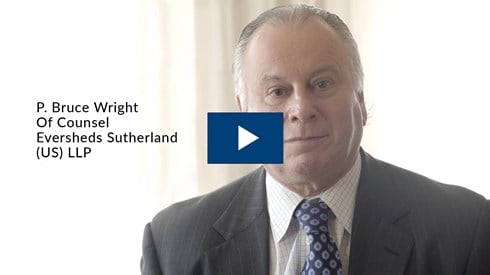Cell Structures and Captive Insurance Innovation

Alex Wright | June 20, 2024

Cell captives have become increasingly popular with companies looking to self-insure themselves in recent years.
Protected cell companies (PCCs, segregated accounts companies, or segregated portfolio companies) consist of a core company or sponsor that writes and administers ring-fenced insurance policies in underlying cells.
These policies and accounts are segregated from other cells in the PCC, hence the name.
History of Cell Captives
The first PCC was formed in Guernsey in 1997. It started as a rent-a-captive option, where a company could buy a portion of a captive.
From this, the segregated portfolio company concept was born. The aim was to protect the assets and liabilities of each cell from another.
Initially, because cells are controlled by a core company, they weren't separate corporate entities. However, that changed when captive domiciles started passing laws to allow cells to form as corporations, with the ability to contract directly and be effectively treated as insurance companies.
The cell captive market has continued to grow in popularity, particularly over the last 5 years, according to Kevin M. Doherty, member at Dickinson Wright PLC in Tennessee. He said that there has been particular interest in forming series limited liability companies (LLCs) because you don't have to register each cell with the secretary of state and can, therefore, operate with less regulatory burden.
Advantages of a Cell Captive
The key benefit of a cell captive is its quick and easy setup, especially for those struggling to secure affordable coverage for hard-to-insure risks in the commercial market. Additionally, it requires significantly less capitalization than a standalone captive. Costs are shared among all participants, resulting in lower expenses compared to a standalone captive due to economies of scale, which enables small companies to participate. Operating costs are also lower.
In addition to the premium savings that can be achieved, a cell can generate cash flows and provide insurance solutions to third-party clients, suppliers, and partners. Cells can also be used to build up reserves and recoup operating profits that would otherwise have been lost by using commercial insurers.
Most importantly, assets retained within a separate cell are not affected by the risks of other cells within the structure.
The management of a cell can be outsourced to an insurance manager at a cost similar to that of a standalone captive. Additionally, cells can access reinsurance markets, which helps to increase capacity and provide greater financial protection.
"Put simply, the cell captive allows you to enter the captive insurance marketplace at a lower level of cost and with less regulation involved because you don't have a statutory minimum capital requirement and you don't have to have a separate license," said Mr. Doherty. "You also don't have to do all the things that you would have to do if you had your own captive, such as hiring all the service providers and coming up with and executing on a coverage plan."
Carter Lawrence, Tennessee Department of Commerce and Insurance commissioner, said, "Cell captives are an easy way to get introduced to the captive concept because they are not as complex as a pure captive, allowing the owners time to familiarize themselves with operational aspects. Additionally, cell captives provide a lower barrier to entry in the captive market."
Disadvantages of a Cell Captive
The main disadvantage of a cell captive is the lack of full control. Since they are operated under the authority of a core company, the risks are limited to what the core company is comfortable managing through the program.
Additionally, cell captives face regulatory restrictions that standalone captives do not, such as being prohibited from engaging in related-party loans.
"The downside is that the core company makes all the decisions, including what coverages will be available to you, and they set the rates," said Mr. Doherty.
Uses for Cell Captives
There are a host of applications that cell captives can be used for. Among the most popular uses is in health care, particularly for medical malpractice risk, as well as in property, construction, and freight storage.
Additionally, cells can provide coverage for employee benefits programs and are increasingly being used to address emerging risks like cyber.
"Just like a standalone pure captive, a cell may be ideally suited for providing coverage to any company in any type of industry that struggles to find coverage for their unique risks or to find that coverage at a reasonable rate," said Travis Wegkamp, captive insurance director at the Utah Insurance Department. "For any organization out there that feels they could better manage their own risks and wants to benefit from doing so, a cell is just as viable an option and may be the best one for those concerned about making the investment to go all in with their own pure captive."
Mr. Doherty added, "Cell captives are applicable to almost any company that is in a middle market scenario and is looking for coverage, whether it's a deductible buy down or another type of coverage that is supplemental to a traditional insurance program that is being purchased at the same time. They aren't limited to any one industry; it depends on the risk you want to cover."
Incorporated and Unincorporated Cells
There are essentially two types of cell captives: incorporated and unincorporated. According to Mr. Doherty, who has expertise in Tennessee captive law, specifics may vary across captive domiciles.
Incorporated cells can be formed as corporations, LLCs, or series LLCs. If they are a corporation or LLC, each cell must be registered with the secretary of state. For series LLCs, only the core company needs to be registered with the secretary of state. Incorporated cells also have ownership shares and the capacity to contract and can obtain a separate federal employer identification number (FEIN), thus qualifying as separate insurance companies for federal tax purposes. The insureds within these cells can sign a shareholder's agreement and a participation agreement. Additionally, ownership of the cell allows it to be spun off and formed into a standalone captive.
Unincorporated cells are similar in that they can obtain a separate FEIN and have their insureds sign a participation agreement. However, they differ in that they do not have shares or ownership nor the ability to contract independently; the core company must enter into all agreements.
"Essentially, an unincorporated cell is a means to participating in insurance coverage—you don't have ownership of the captive from a corporate standpoint," said Mr. Doherty. "An incorporated cell, on the other hand, has all the attributes of a corporation structure, enabling you to enter into contractual agreements on your own."
Therefore, it's vital to understand all of the options available when forming a cell so that it's structured in the best way for your company.
Cell Domiciles
Broadly, most captive domiciles take a similar approach to the formation and oversight of cell captives. Yet, in some cases, there may be nuances between how the states operate.
Mr. Wegkamp stated that Utah's process for forming a cell captive is essentially the same as for a standalone captive, except that it requires a draft participation agreement outlining the relationship between the core company and its cell participants. The company forming the captive uses the same online application, which requires the same information needed to establish any type of captive, he said.
"If this cell will be operating the same cookie-cutter-like program as existing cells in the sponsored program, then to the extent possible, we'll reuse as much from previous submissions as possible, including the business plan, feasibility study, etc.," said Wegkamp. "Also, as cells have no minimum capital requirement, there will be no need for confirmation of funding on our end. Additionally, cells will need to pay the $200 application review fee and pay the $1,000 license fee before commencing operations."
Vermont licensed its first sponsored cell captive in 1999, and in 2012, it passed legislation that allowed the formation of incorporated protected cells. In 2016, the Vermont legislature allowed sponsored and association captives to report on a fiscal year-end in alignment with the parent company's reporting year-end.
Then, in 2020, it reduced the minimum core capital for a sponsored cell captive from $250,000 to $100,000, allowing flexibility to insure unaffiliated business in a cell in the same way as a standalone captive. This also explicitly allowed cells to form separate accounts within a given cell and provided flexibility in investments by giving sponsored captive companies and their cells the option to develop a plan for approval by the state's Department of Financial Regulation.
In 2022, the Vermont legislature updated the statute to authorize the Department of Financial Regulation to efficiently deal with the affected cell without impacting solvent cells or limiting current authority. Vermont also continues to work closely with the Vermont Captive Insurance Association to consider new ideas for how to improve procedures and statutes.
"Companies looking to form or expand captive programs are recognizing more and more in recent years that the cell structure is a favorable type of captive for formation and operation of smaller or medium-sized entities, for those looking for the convenience of reduced administrative burden, or for those entities that want to start with a more simple program and build from there into a single parent captive," said Brittany Nevins, captive insurance economic development director at the State of Vermont. "Cells are also a great tool for single parent companies to expand their program and become a sponsored captive as they become more sophisticated.
"The sponsored structure allows for the creation of cells within that structure which other companies and organizations can utilize. Increasingly, single-parent captives are looking to convert to a cell structure as well. Recognizing this, the Vermont legislature added explicit language allowing for this conversion in 2024.
"Historically, the sponsored captive structure was utilized by service providers associated with larger brokerage firms as a way to add value to current customers, with lower barriers to entry into captive ownership through cell participation (the "rent-a-cell" concept). Over the last several years, we've seen growing levels of sophistication within sponsored structures.
"We have seen closely held sponsored captives, where a corporation will form the core, then utilize cells to segregate risks by business unit or line of coverage in order to drive innovation and accountability within the organization. Front companies have also utilized cell structures as a tool for certain non-admitted lines, and employer groups have used cells to save in the employee healthcare space."
Utah first passed sponsored cell legislation in 2011. Since then, the state has incrementally lowered the minimum capitalization requirements for cells. Effective May 1, 2024, the minimum amount required was lowered to $250,000, with a minimum of $50,000 from the sponsor/core company at all times.
Tennessee also recently lowered its capitalization requirements from $250,000 to $100,000 and has seen a substantial uptick in sponsored cell program formations as companies encountering issues with financing specific risks in the traditional market have turned to captives to mitigate their exposures. Most of the cell captive growth has been in property, cyber security, and medical stop-loss lines.
"In Tennessee, captive owners work with an approved captive manager who helps develop a program that fits the company's needs," said Mr. Lawrence. "An application is then filed with the department that includes a business plan, feasibility study, pro formas, parent company financials, copies of draft policies, biographical affidavits, and applicable fees. Our team then reviews the application, and if all the criteria are met, we issue a certificate of authority to the company."
Sam Komo, captive manager at the Missouri Department of Commerce and Insurance, said that the state added sponsored captive language to its law in 2013 and licensed its first sponsored captive in 2022. He added that it's currently working on its second sponsored captive formation, which is expected to increase the number of cells throughout 2025.
Lori Gorman, deputy commissioner at the North Carolina Department of Insurance, said, "In North Carolina, we understand that a one-size-fits-all approach does not apply to captive insurers and instead seek to regulate each captive insurance company based on its own unique risk profile. North Carolina's Captive Insurance Act provides commissioner Mike Causey significant discretion in regulating captive insurers with a flexible business-friendly approach."
Alex Wright | June 20, 2024




